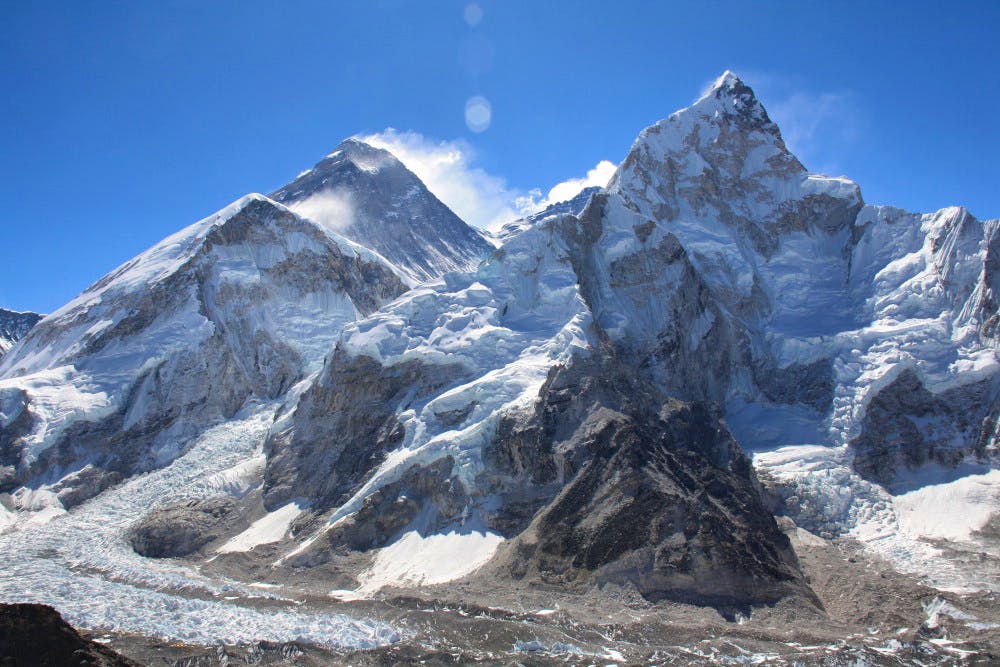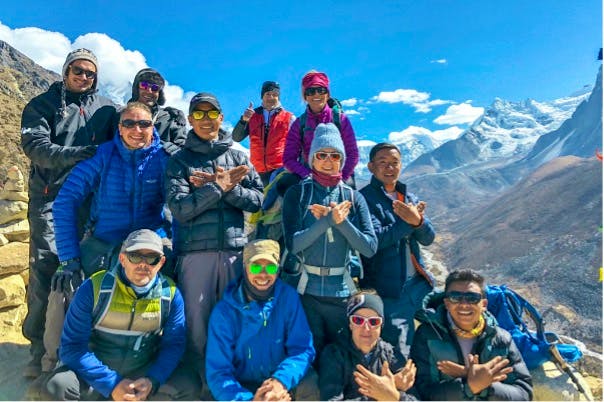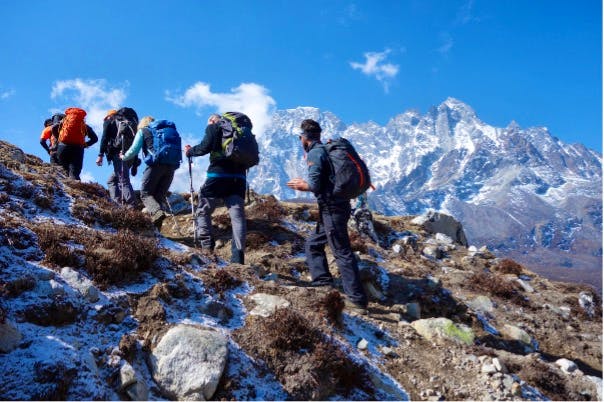The Hidden Dangers: Everest Base Camp Deaths (Facts & Stats)
Everest Base Camp hiking deaths are rare but it's worth understanding the risks, facts and statistics before embarking on this iconic adventure.
The allure of trekking to the base of the world’s highest peak is undeniable, yet it comes with risks you shouldn’t overlook.
Everest Base Camp Trek Deaths: What You Should Know
While the allure of an EBC hike captivates thousands of adventurers each year, it’s crucial to be aware of the risks involved, including the sobering reality of Everest Base Camp trek deaths.
The Reality of Risks
While the Everest Base Camp trek is obviously a much safer and easier alternative to attempting the summit of Mt. Everest, it’s essential to understand that the hiking route to Everest Base Camp is not without its risks.
According to estimates, around 3-5 people die each year on the Everest Base Camp Trek, although this number could be as high as 12-15. Considering that roughly 30,000 people undertake this trek annually, the death rate is about 0.03%.
Most of these unfortunate incidents are due to altitude-related illnesses or underlying conditions exacerbated by the high altitude.

Common Causes of Deaths and Incidents
Understanding the risks of an Everest Base Camp trek is the first step toward a safer adventure. Let’s delve into the common causes of deaths and incidents so you can be well-prepared.
Altitude Sickness
One of the most prevalent issues trekkers face is altitude sickness. The symptoms often include headaches, nausea, dizziness, and shortness of breath. It’s crucial to recognise these signs early and take immediate action.
Types of Severe Altitude Sickness
High Altitude Cerebral Oedema (HACE): This is a severe altitude sickness affecting the brain. Symptoms may include confusion, difficulty walking, and altered mental status. Immediate descent is crucial.
High Altitude Pulmonary Oedema (HAPE): This affects the lungs and can cause extreme breathing difficulty, even at rest. Like HACE, immediate descent is required.
Environmental Factors
While the trek is a breathtaking experience, nature can be unpredictable. Avalanches and earthquakes have occurred in the region, posing significant risks.
In 2015, an avalanche claimed the lives of 19 climbers at Everest Base Camp. Always stay updated on EBC weather conditions and listen to your guides.

Human Errors
Sometimes, the danger comes not from nature but from within. Overexertion, lack of preparation, and ignoring symptoms can lead to severe consequences.
It’s essential to know your limits and adhere to them. If you’re feeling unwell, it’s better to pause or turn back rather than push through and risk your life.
Pro tip: We prioritise safety at Skyhook by only working with expert local guides and well-planned itineraries. But remember, your well-being is also in your hands. Being informed and prepared can make all the difference in your trekking experience.
Prevention and Safety Measures
Knowledge is power, especially when trekking in high-altitude regions like Nepal. Let’s talk about some preventive measures that can make your journey safer and more enjoyable.


Latest Deals
Acclimatisation and Its Importance
Acclimatisation is the process of gradually exposing your body to higher altitudes to allow it to adapt to the reduced levels of oxygen. Skipping this step can lead to severe altitude sickness.
We at Skyhook recommend a trekking itinerary that includes acclimatisation days, where you ascend to a higher altitude for a short period and then descend to sleep at a lower altitude. This “walk high, sleep low” strategy is proven to help your body adjust more effectively.
See Skyhook's most popular EBC trips:
Proper Gear and Packing Tips
The right gear can make or break your trekking experience. Essentials include moisture-wicking clothing layers, a sturdy pair of trekking boots, and a high-quality down jacket for those chilly nights.
Don’t forget a first-aid kit with medications for headaches, and other common ailments. See our comprehensive Everest Base Camp gear list to ensure you’re well-equipped for the journey.
Importance of Guided Treks
Guided treks offer an extra layer of safety and expertise. Always ensure your guides are experienced, knowledgeable, and trained in first aid and high-altitude rescue.
They’ll monitor your well-being throughout the trek and can make crucial decisions in case of emergencies. Plus, they’re a treasure trove of local knowledge, adding depth and context to your adventure.
See: Can I hike to EBC solo?
Nutrition and Hydration
Don’t underestimate the power of proper nutrition and hydration. High altitudes can suppress your appetite and make you dehydrated faster. Always carry water purification tablets and high-energy snacks like protein bars and nuts. Staying nourished and hydrated can significantly reduce the risk of health issues.
Pro Tip: Drink at least 2-3 litres of water daily during the trek.
Emergency Protocols
Being prepared for emergencies is crucial. Familiarise yourself with the nearest medical facilities and know how to contact emergency services. Ensure you have proper EBC travel insurance that covers the heights you’ll be trekking at. It’s always better to be safe than sorry.
Pro Tip: Carry a small booklet or a digital note with emergency contact numbers and basic first aid instructions.
How Many People Have Died On Mount Everest?
According to official records, more than 330 people have died attempting to summit Mount Everest since the 1920s. Final numbers released by Nepal authorities showed 18 people confirmed to have died in 2023, making it one of the worst years on record. About 60% of the bodies have not been recovered which means there are about 200 frozen corpses on the mountain.
If you are trekking EBC, you do not need to worry about the above figure. Hiking to base camp in a straightforward, multi-day hike. Although tough, it poses nowhere near the same amount of risk and technical difficulty as attempting to climb to the summit.
Conclusion
It’s crucial to approach your Everest Base Camp trek with the respect and preparation it deserves. Understanding the risks and taking preventive measures can significantly enhance your safety and enjoyment.
Choosing a responsible trekking company like those who have been vetted by Skyhook ensures you’re in expert hands throughout your journey. So go ahead, chase that dream of standing at the base of the world’s highest peak, but do it wisely and safely.
More EBC Articles
Find your next adventure
Why Skyhook?
Join over 27,000 Skyhook adventurers who've used our platform to book directly with our vetted local guides, at local prices (we never markup).
Expert Local Guides
Experienced local guides, handpicked by us.
Best Prices
Never pay a markup on the local guide's price.
Exclusive Club
Earn loyalty rewards every time you travel.
Great Social Vibes
Small group tours provide a richer experience.
Stellar Feedback
Over 2,800 reviews, average of 4.9/5 stars.












